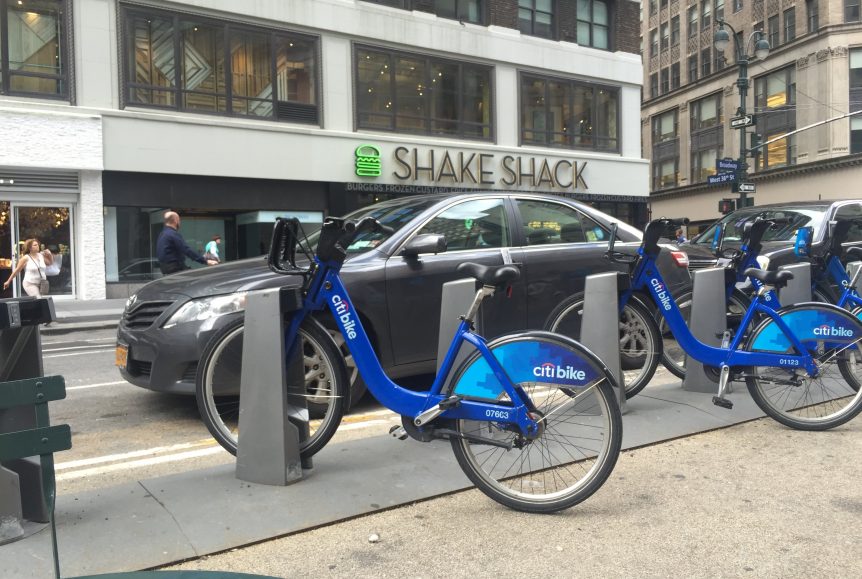As we started to plot out a path to early retirement, we had recently purchased a new vehicle. This vehicle purchase was made from habit as much as any other single factor. We bought this car in much the same manner as previous vehicles. We needed two cars, right? And we needed to own vs. lease, right? And we drive so many miles that buying new would be a better value for us in the long run, right? These statements were true for some previous version of us.
That previous version of us was really good at buying cars. We always felt more car savvy than many of our peers. We haven’t paid a penny of interest on an auto loan in more than a decade. We credit one particularly smart (and a little bit lucky) car-buying decision all the way back in 2002 as having set us up for the financial position we’re in today. As early as 2009 we knew we’d never again take out a loan longer than 36 months for a car. Compare this to family members who have said “I’ll always have an auto loan.” We’ll never forget the look we exchanged in that moment. Cars are expensive enough to have a huge impact on your finances. At the same time, they are cheap enough to enable people to make colossally bad decisions that will follow them for decades. We have too many thoughts on automobiles to fit in this one post. Driving our cars until they die (or until the maintenance costs effectively kill them) meant we didn’t buy vehicles very often. This caused some tunnel vision for us.
Speeding half a decade forward: our lifestyle changed. The U.S. auto landscape and attitudes about driving and auto ownership, had changed too. When we bought our last vehicle in late 2009, Uber was less than a year old and not yet live, even in its native California. Ms. Vine was years away from grad school and had what we believed to be a short commute–at 9 miles each way. Mr. Vine’s commute was about 30 miles each way. By the time we purchased this newest vehicle six years later, both of us had commutes shorter than 2 miles each way, that could be safely walked or cycled, one of which was also on a free bus route. Uber and its competitor, Lyft were, of course, available everywhere.
Despite knowing that we and our world had changed, we bought this vehicle based on our former selves and our former knowledge. That old skillset had overstayed its usefulness. It soon became clear to us how little we needed the new vehicle. We’d become a 1.5 car family without fully realizing it. With a little bit of effort, we could probably be a 1 car family. Indeed, owning a second car is more of a hassle than a convenience between its parking, maintenance, and government-imposed costs.
Mr. Vine declared that we’d never buy another vehicle again and that the new car was the last one we’d ever own. Our older car is about the same age as Uber, but hasn’t aged quite as well. Nonetheless, it should should keep running for close to the balance of our careers. Even if it doesn’t, old-school daily rentals, services like the now-ubiquitous Uber and Lyft, and other car shares like Zipcar, could get us through those rare occasions where each of us requires a car. The older car is relatively low on maintenance costs and doesn’t have a huge resale value. We’re still reluctant to jettison ourselves into the single car life. It’s much more palatable to go down to 1 car by attrition–to hopefully coincide with eliminating our careers, the single biggest source of 2 car necessity.
You may have heard that Kara Swisher is ditching her car, much more famously than we are. Reading her column was validating, if it did steal some of our thunder. When we tell people we expect to never buy another car again, it seems more outlandish than retiring early. We live in a city where we can walk to almost everything we need. The thought of not owning a car, or only owning one, induces more relief than any other feeling. Autos seem to be an endless series of tasks–license plate renewal, routine maintenance, repairs, parking, fuel, etc.
Which brings us–finally–to this article’s subtopic. The average length of an auto loan in the U.S. is creeping towards six years, at 69 months. We’ll reach financial independence sometime in 2023 and plan to conclude our careers during 2024. As of this writing, we have less than 68 months remaining in our careers. The average person buying a new auto in the U.S. today will be making payments on that car longer than we’ll be working.
Despite watching the numbers creep up towards our nest egg goal, and watching our expenses fall and stabilize, early retirement still feels far off and somewhat unattainable. Putting our timeline into more concrete terms like the average length of a car loan, something we understand and have repaid in full [too] many times over, helps us realize how short that timeline really is. We doubt any of our readers are taking out a vehicle loan longer than five years, but if you are or have more than 60 months remaining on your payoff, want to race? Let us know in the comments.

One Comment